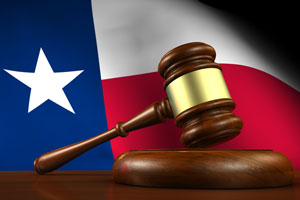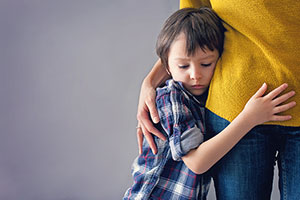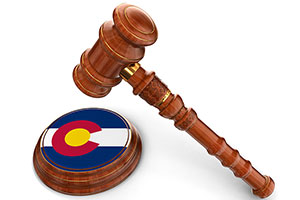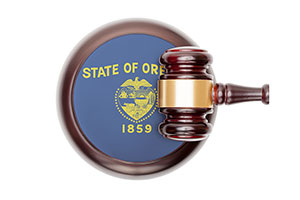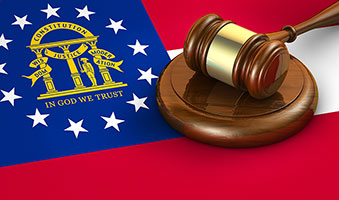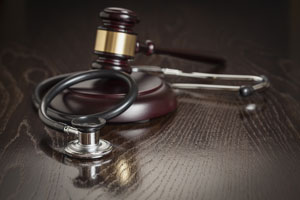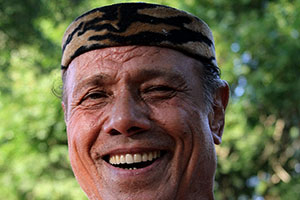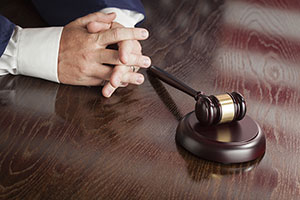Richard and Monica Beyer sued Anchor Insulation after Anchor insulated their home with spray polyurethane foam (SPF). The Beyers alleged that the SPF was a defective product. A federal judge in the District of Connecticut agreed to admit expert testimony that the SPF was defective and improperly installed, but did not allow the Beyers’ expert witness to testify that the SPF harmed the Beyers’ health.
SPF Installation
The SPF that was used in the Beyers’ home begins as two liquids stored in two separate drums. The liquids are pumped through separate hoses that are joined in a single nozzle. The liquids mix as they are sprayed from the nozzle, forming a foam that expands and hardens into an insulating material.
Anchor used liquids manufactured by two different companies. Both companies train installers to make sure the liquids are mixed in equal proportions, and both caution installers not to mix their products with products manufactured by a different company. Anchor allegedly ignored that caution by mixing products from the two manufacturers rather than buying both products from the same manufacturer.
According to warnings that come with the product, each liquid can cause respiratory problems while being sprayed. The resulting foam is relatively safe, but it can also cause respiratory problems if it is chipped or ground into dust and its particles are inhaled.
The Beyers submitted evidence that Anchor’s installers failed to follow recommended procedures by mixing liquids from two different manufacturers, by spraying the foam in thicker layers than the manufacturers recommend, and by spraying new layers before the earlier layers have a chance to cure. A visual inspection revealed that the foam shrunk as it hardened, pulling away from the surfaces onto which it had been sprayed. One of the manufacturers examined the foam and concluded that it had been contaminated by mixing products.
Eleven months after the SPF installation, Anchor agreed to remove it. Anchor did so by grinding the insulation into fine particles. The home filled with dust from the foam as a result of Anchor’s efforts.
Beyers’ Alleged Illness
The Beyers complained that they began to experience a variety of symptoms soon after the SPF installation, including prolonged headaches, fatigue, difficulty breathing, heart palpitations, memory loss, and boils. Some of those symptoms are consistent with literature that addresses exposure to the chemicals used to create the SPF.
Richard Beyer’s treating physician diagnosed a respiratory disorder after his exposure to the SPF. Anchor’s physician confirmed that Richard Beyer had a pre-existing condition of asthma that worsened after his exposure to SPF. Neither of those physicians opined that SPF exposure exacerbated Richard Beyer’s asthma.
Expert Testimony Regarding Physical Harm
Anchor challenged each of the Beyers’ three experts. Anchor contended that their testimony was inadmissible and that without the testimony, the Beyers could not establish that their product was defective or that the product caused their physical injuries or damage to their property.
The Beyers relied on Dr. Yuh-Chin Tony Huang to establish that the Beyers’ physical ailments were caused by SPF exposure. Dr. Huang is a professor of medicine who specializes in pulmonology. Dr. Huang opined the Beyers likely developed chemical sensitivities to the SPF based on the fact that they were exposed to it and that their symptoms are consistent with symptoms caused by SPF chemical compounds.
The court noted that the Beyers must prove both general causation (SPF is capable of causing their injuries) and specific causation (SPF actually did cause their injuries). Epidemiological studies are usually used to prove general causation. Dr. Huang based his opinion as to general causation on a peer-reviewed article that he co-authored regarding the health effects associated with the faulty application of SPF in residential homes.
Dr. Huang candidly admitted that his research established a likely association between SPF and respiratory ailments, but that an association does not prove causation. Dr. Huang’s article reported symptoms of thirteen individuals exposed to SPF compounds, but it did not compare those individuals to a control group. Dr. Huang described the article as an expanded case report rather than a study. The trial court found that Dr. Huang’s article raised questions about the link between SPF and respiratory diseases but, given the small population and the absence of a control group, the report could not establish general causation.
Nor did the court believe that the causation evidence was bolstered by warnings that the chemical manufacturers provided. Those warnings caution people who use the chemicals to wear respirators because the chemicals might cause respiratory problems, but an abundance of caution in issuing product warnings cannot be taken as proof that a product is dangerous.
The court determined that Dr. Huang could not establish specific causation because he wrote his report before examining the Beyers. While he relied on other physicians’ reports as the basis for his conclusions, he admitted that a physician cannot determine the cause of symptoms without assessing whether those symptoms are real, which requires talking to the patient.
In addition, Dr. Huang did not explain how or whether he ruled out alternative explanations for the symptoms, including Richard Beyer’s preexisting asthma. For all those reasons, the court excluded Dr. Huang’s testimony on causation “as insufficiently reliable for a jury’s consideration.”
Expert Testimony Regarding Property Damage
The Beyers relied on two chemists to testify that Anchor sold a defective product because its SPF was made from two liquids that should not have been mixed, and that it applied the SPF improperly. Anchor did not challenge their qualifications to testify, but contended that one of the experts relied on a nontestifying (consulting) expert for his opinions without exercising independent judgment.
The court was critical of the testifying expert for adopting part of the consulting expert’s report verbatim. The court nevertheless allowed the expert to testify to the extent that he independently verified information in the consulting expert’s report. Subject to those limitations, the expert was permitted to testify that Anchor’s product was defective and was installed incorrectly.
The court did not admit the expert’s opinions about remediation of the home, because the testifying expert testified that the consulting expert was more knowledgeable about remediation and that he adopted the consulting expert’s report for that reason. In addition, while the expert was permitted to testify that improper installation contributed to product failure, he was not permitted to testify that the installation was contrary to industry standards, since he had no expertise with regard to those standards.
The second chemical engineer was qualified to testify about the dangers that arise from exposure to the chemicals used to create the SPF. The court did not allow the engineer to testify that Anchor failed to give the Beyers appropriate warnings because whether the Beyers were warned was a question of historical fact that was beyond the expert’s knowledge. He was permitted, however, to testify about possible sources of chemicals in air samples that the other engineering expert found.
Court’s Decision
In the end, the exclusion of expert testimony about the health consequences of SPF precluded the Beyers from bringing a personal injury claim. Their expert evidence did allow them to bring a claim that improper SPF installation damaged their property. The Beyers were therefore allowed to bring the property damage claim, but not the personal injury claim, to trial.



